#Transforming Monkey
Explore tagged Tumblr posts
Note
There is so much Wukong x OC or Wukong x Reader I’m actually flabbergasted. Six Eared Macaque I understand but not the asexual, super Buddhist monkey.
I answered something like this nearly a year ago but I'm still going to have the same answer a few times.
Wukong is a very charming and compelling character so it's not insane to think how people can fall in love with the character romantic or not. Narratively wise there has to be some suspension of disbelief but that is why it is fiction itself, and romance is another genre used to explore character depth. Wukong is a well-written interesting characteristic and I am not surprised that people are drawn to him again whether platonically or romantically, both imply a level of affection they have for Sun Wukong. There has been other media that asks for that 'suspicion for belief' as well.

I've also spoken about how Wukong with a significant other isn't that strange either. For the past twenty years, Wukong has been the object of desire in dozens of xiyouji romance plays and moves ever since the hit film Chinse Odessey, which cemented that Sun Wukong isn't just a hero, but a human being that has his own wants and flaws, and capturing the hearts of millions cause they saw themselves in him and his struggles. I talked about how impactful this movie was in changing Wukong from a fighter to a human here and here. Nowadays with more modern films, the use of romance isn't the only trope to use to explore characters and have them relate with audiences when it comes to love and lost but in the 2000s there were dozens of Wukong romances trying to capture that magic again of Wukong experiencing love and losing it because not matter how strong he is, he is just like anyone else and have heartache.

And it doesn't have to be Wukong from the original book. While Wu Cheng'en was able to provide that Wukong himself is a complex, charming, intelligent, and fascinating individual, there are hundreds of movies and shows that also wish to explore such a transformative character. I still see how popular Hero is Back 2015 Sun Wukong was and still is as one of the most fan-favorite Wukongs. There are many different Wukongs in different media that can be fan-favorites and really stick with audiences but that doesn't necessarily mean these are meant to be Wukong from the book as movies/shows could add or subtract certain elements from the Book Wukong in these adaptations. It would be unfair to both the book and the artists to say they are the same as the novel was created 400 years ago with heavy themes and saturated in symbolism, while movies and shows are created by artists for a generation, each media a time capsule for their audience and a reflection of the directors that wish to still be unique in their designs. While I have no doubt that many people adore Wukong from the novels I can't say that anyone hasn't been influenced by other media in how they interpret Wukong as well.
That rambling aside, what I'm trying to say is that Wukong and romance are nothing new, and seeing people ship themselves with Wukong is also nothing new. Six Ears only has two chapters and only really shines when movies or shows give him screen time, which is highly skewed due to the SHEER amount of Xiyouji media with just Wukong there is making that statically Wukong of course is going to have more fans, both back then and now.
#anon ask#anonymous#anon#jttw#journey to the west#sun wukong#xiyouji#ask#the quote are from#Transforming Monkey#Adaptation and Representation of a Chinese Epic#Transforming Monkey Adaptation and Representation of a Chinese Epic#Hongmei Sun
23 notes
·
View notes
Text
If you're a disabled young person, you've most likely been hit with the "pfft you think you're in pain now? Just wait til you're my age" bullshit from older people at least once. Everyone talks about how invalidating it is
But I haven't seen anybody mention how it's terrifying, too. Yes, I know health deteriorates with age. I know that old age is a disability unto itself. I know that the healthiest person alive will start getting aches and pains past the age of 40 and may even need mobility aids
I know all this stuff. And it always makes me think "yeah, if I can't walk without joint pain even while using mobility aids AT AGE 21, how painful will life be for me at the age where it gets painful for everyone?"
And it's hard not to feel like I'm doomed, y'know? Where most people get a period of health that they wish they appreciated more when they start to lose it, my starting point was a body that doesn't work properly and it's only gonna get worse from there. It's worse every fucking year.
TLDR stop telling disabled young people that their pain will only get worse to the point of being unimaginable as they age, WE FUCKING KNOW
#physically disabled#actually disabled#disability#uaarghh *transforms into a giant monkey*#calugaritsa original
9K notes
·
View notes
Text

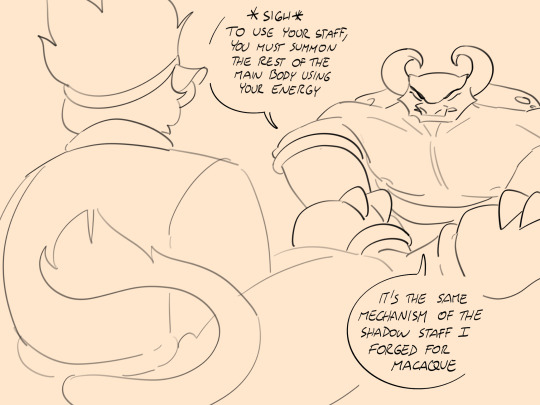
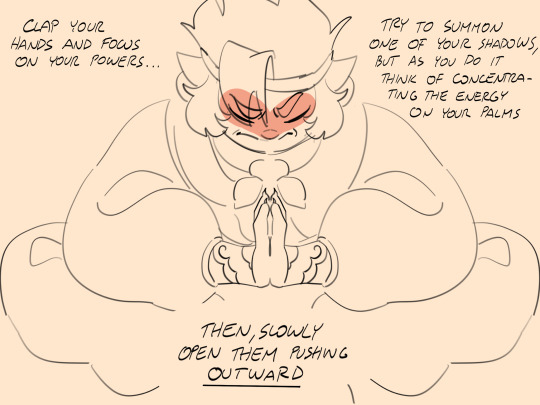

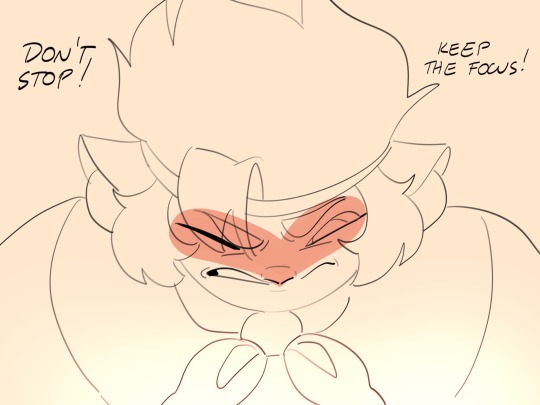
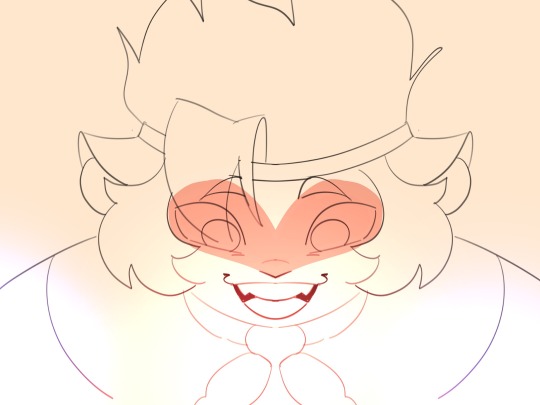

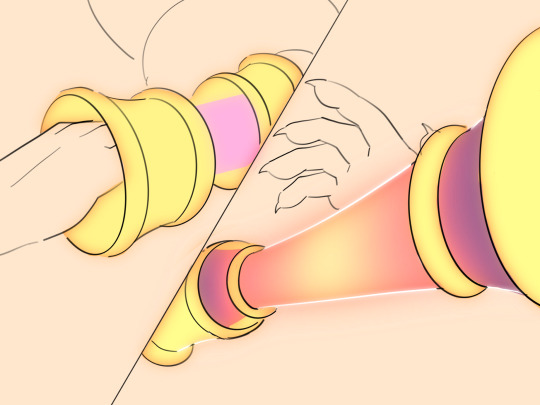


They are so proud of their boy (I’m crying from joy/eating the pillow the baby has his own Sunset Rod)
Shadowpeach Bio Parent AU (PREV / FIRST / NEXT )
if it wasn’t clear only the cuff remains when the weapon isn not summoned. Kind of a in-between from completely summon it like macaque and keeping it hidden like wukong does. Also as his shadow powers grows, he will able to extend/stretch/widen the staff more like the normal ruyi bang.
Extra concepts and sketches under the cut
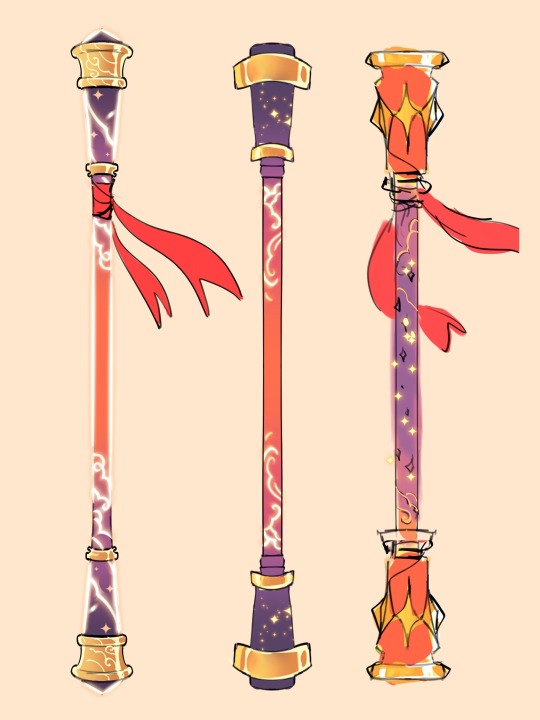
#this reminded me of magical girls#but i mean#isn’t MK a magical girl of sort in the end?#we’re just missing the outfit transformation#my art#kyri45#comic#lmk#lego monkie kid#lmk fanart#lego monkie kid fanart#lmk season 5#lmk shadowpeach#lmk monkey king#lmk sun wukong#lmk macaque#shadowpeach#shadowpeach bio parents au#lmk six eared macaque#liu er mihou#lmk mk#lmk qi xiaotian#monkey mk#monkey qi xiaotian
6K notes
·
View notes
Text
Just a spa (or two or three!) for Monkey
Monkey's first person loved him for years, and then his first person had a little boy, and after a generation plus five more years of love, Monkey was feeling a bit worn. Here is his diagnosis photo:

Monkey is a local creature, so once we agreed on a treatment (spa, bald spot treatment, wound repair, new eyes, seam tightening), he was hand delivered by his family.
He started with a spa:

As you can see, the black turned white fairly quickly, but it was almost paint like in texture. I actually wrote to his family, to ask if he had ever had a paint job! The answer was no, it was just oils and dirt from years of an adventurous life. So he had another bath, and another, and a LOT of hand scrubbing, and gentle, one hair at a time, oil removal. Oils aren't uncommon, but this paint like density is. I actually followed the treatment used to remove oil from birds and mammals who get caught in oil spills, and that was eventually the ticket to restore Monkey's fur.
Here's his heart being made and installed with a bit of his original stuffing:




You can see he got modern, hypoallergenic polyfiber stuffing as part of his spa to replace the foam (which disintegrates with time).
Here he is all better! He even got a new nose based on one of his baby photos (his face had been so thickly coated originally, we didn't know it was missing till he was clean!).




You can also see a small fur transplant he needed on the side of his neck for a larger bald spot in the last photo.
In any case, Monkey was ready to go home, but he had to hang out at the hospital a few more days, till his original person was off work. Then both generations came to pick him up. Their reaction:
Absolutely incredible!!!!!!!!!!! I’m still in shock ! Thank you so much !
#stuffed animal repair#stuffed animal hospital#stuffed animal stories#monkey#stuffed monkey#toy monkey#stuffed animal cleaning#toy repair#plushie#plush monkey#plush toy#plush animals#plush toy repair#plush toy cleaning#cleaning transformation
2K notes
·
View notes
Text
more of this miserable thing I made, somehow it became A Whole Au… no it does not get any better for them LMAOOOAOAOOA





it’s a father/son descent into madness! im calling it DON’T DO THIS, DAD and it’s mainly about frenzy and soundwave’s extremely ill-omened endeavours to bring rumble back to life. yes rumble is very much around and actively haunting them. no he doesn't consent to this
start
next
#yeah….we are going full resurrection route with this one!!#very much a cliche but i eat it up every time…..#i am a simple woman i see characters trying to bring their loved ones back from the dead i go monkey brain neuron activation#frenzy specifically gets super haunted and sees his bro everywhere#THIS HAS GONE SO FAR FROM THE SOURCE MATERIAL. THHKGHAK;HFHAHGJHA#i dont usually make super angsty stories but this one just clicked for some reason....#humanformers#transformers#soundwave#maccadam#rumble#frenzy#zorangetf#tf art#artists on tumblr#this is.....extremely similar to the story im making for my ocs....they ar ocs at this point....#DON’T DO THIS DAD
2K notes
·
View notes
Text
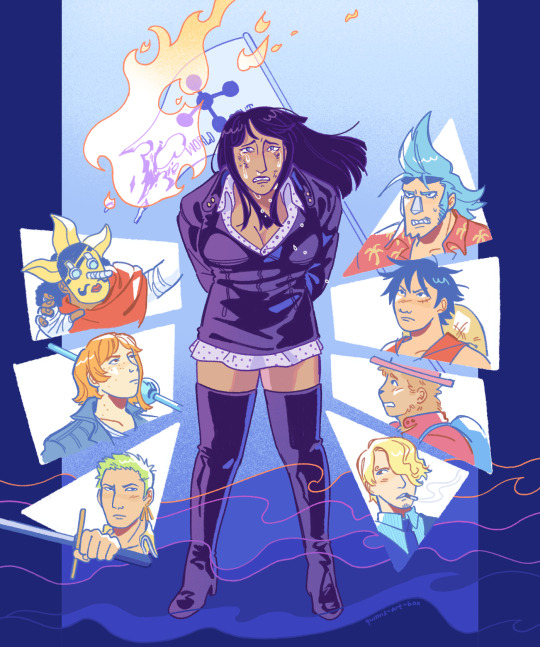
ROBIN!!! THERE'S STILL SOMETHING I WANT TO HEAR YOU SAY!!!
#id like to do some art for this arc that's a little more like. transformative. because it means SO MUCH to me#but for now i just wanted to draw all of them teehee#one piece#enies lobby#nico robin#monkey d luffy#nami one piece#usopp one piece#sogeking#tony tony chopper#roronoa zoro#sanji one piece#franky one piece#cyborg franky
2K notes
·
View notes
Text






No super cute post today! I’m out working on the race car! Got the brake fluid changed and new EBC pads/rotors on all 4 four corners! Now I’m about to do a transmission/diff fluid change! Don’t forget to nut and bolt check while under the car!
(Brownie points to who can guess the size of this socket 😜)
#girls that work on cars#car girl#monkey wrench#trans#transgender#trans pride#transisbeautiful#mtf#transgirl#girlslikeus#mtf hrt#maletofemale#transformation#trans car girl#trans women#trans woman#trans women are beautiful#actually trans#this is what trans looks like#trans community#trans is beautiful#trans experience#trans feminine#trans is sexy#trans is so hot#trans people#trans positivity#mtf positivity#lgbtq community#lgbtq positivity
442 notes
·
View notes
Text


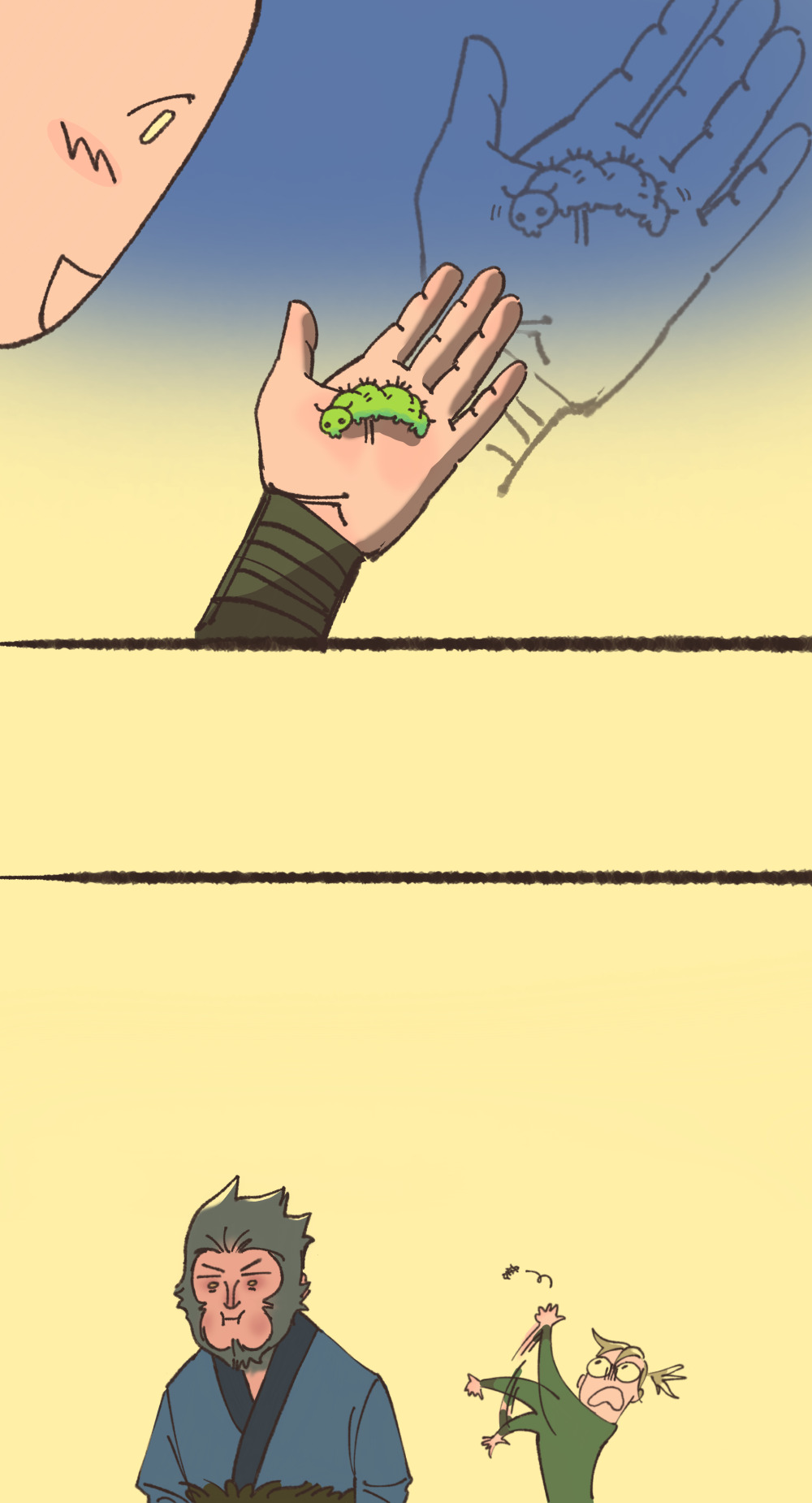

“You- get back here you stupid monkey!!!”
just shenanigans on the road ;)
bonus:

#s0rr3l's art#black myth wukong#black myth wukong oc#liyu#destined one#destined one x oc#liyu x yezi#kajxhkjhd ok imma be real. the sketch n lineart was done prtty quick#BUT THE COLOURING OMG#and i was trying to make colour scheme for liyu#AHHH ITS FINALLY DONE IM SO PROUD OF HOW IT TURNED OUT#i have so many more ideas :) gonna draw all the ideas#monkey got blamed for trying to do a good deed but he also likes being naughty#catterpillar actually a transformed leaf ;)
890 notes
·
View notes
Text
I have daydreamed about this kind of edit for MONTHS but only now could I actually do it. It just fits so perfectly!!
I'm pretty proud of this and it took me 5:24 hrs to make. There were a few things I had to redo because of glitches/low quality but other than that this was a joy to make!
#(I pray to see this in a gacha react video one day 🙏)#transformers#tfp#implied dad Unicron#he's proud of his little murder monkeys#Unicron is earth#earth is a cybertronian deathworld#maccadam#transformers prime#tfp miko#miko nakadai#tf#transformers x humans#transformers x human#tfp megatron#tfp arachnid#tf bumblebee#transformers bumblebee#bumblebee movie#transformers bayverse#tfp hardshell#tfp jack#tfp optimus prime#tfp soundwave#tfp raf#bayverse ratchet
220 notes
·
View notes
Text
Imagine being in a state of ecstasy, constantly from start to finish, during a battle must be terrifying for Luffy's opponents
Imagine a dude GENUIENLY laughing, giggling and making fun of you in a battle where powers that destroy literal buildings are colliding and haki that would make an entire island worth of people pass out clashing
Luffy isn't taking anyone seriously, joking around and doing shit for fun.
It get so fucking scary when he gets serious. He's still smiling mind you. But he's got that dangeous glint in his eyes constantly now instead of random moments of it appearing.
Red eyes setting off the alarm bells in your head and his giggles probably sounding like hearing a child laughing in an abandoned forest while you're alone in there.
NOT TO MENTION THE FUCKING DRUMS. Just. Random ass drums start playing. You are in a fight that will probably destroy you. And there's fucking music randomly playing in the bg.
#anime#one piece#luffy#monkey d luffy#anime boy#manga#one piece manga#one piece anime#gear 5#nika#sun god nika#human human fruit: sun god nika#luffy's gears#luffy gear 5#transformation#eerie#creepy#HE'S SO CREEPY I LOVE HIM
1K notes
·
View notes
Text
TFP AUTOBOTS AS BEAST WAR (Part One)
Ratchet (my favourite grumpy man)— St Bernard Dog


Wheeljack— Monkey


Bulkhead— Hippo


One more doodle:

#transformers#artists on tumblr#drawing#tumblr draw#my art#digital art#tfp#transformer prime#transformer au#tfp miko#tfp bulkhead#tfp ratchet#tfp wheeljack#tf beast wars#transformer beast war#beast wars#doodle#hippo#monkey#dog#st Bernard
225 notes
·
View notes
Note
How would Optimus show affection to Blitzwing? And even better question, will he end up showing affection in your comics? Maybe we’ll get the ‘L’ word. ‘Love’ not ‘lesbians’!1!1!!
He does it in a very subtle way! Unlike Blitzwing his affection is more casual and doesn't really verbally express it all that much. Taking note of what Blitzwing likes and acting based on that.
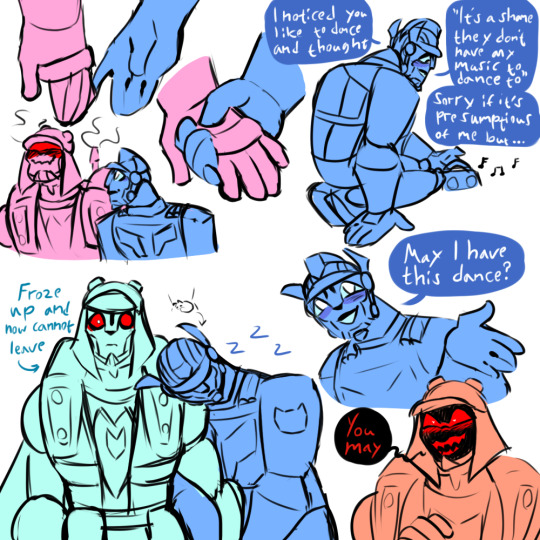
(Wings isn't very used to non-sexual intimacy)
#Crispy answers#Blitzop#Blitzprime#Blitzwing#Optimus Prime#tfa#maccadam#transformers#For if they happen in comic: It's already happened. You just have to keep in mind these habits#And for the Love word. The monkey paw curls
308 notes
·
View notes
Text

Started drawing, blacked out and suddenly doop content.
#my art#optimus primal#dinobot#transformers beast wars#transformers#maccadam#maccadams#doop#HMMMMMM MONKEY#beast wars#dinoprimal#dinop
174 notes
·
View notes
Text

♪♫*•♪ The look of love The rush of blood The "she's with me" The garlic shrug
THEM. OMGGG ICAN'T 😭😭
Fast art cuz I'm lazy ass plz request me art or I goin' crazyy and freaky
#oplita#elita one#transformers#elita 1#transformers optimus#optimus prime#optimus x elita#love#they in love#fight me#i love transformers#transformers fanart#idk man#cuties#arctic monkeys#i love this song#female dominance
285 notes
·
View notes
Text

#transformers#maccadam#mtmte#rodimus prime#put him in a super monkey ball aaaand hes gonna be in there forever
161 notes
·
View notes
Text
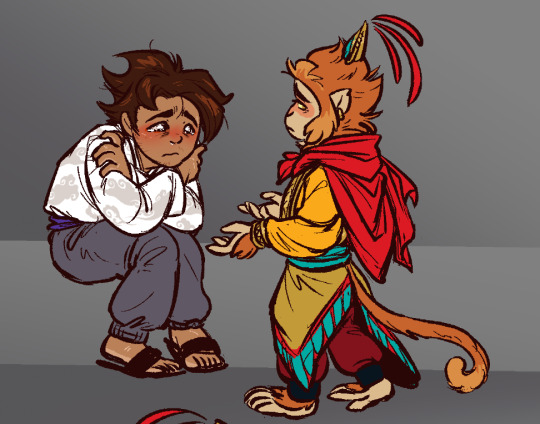

"C'mere, Bud. I got you, it's gonna be okay..."
#wukong using his transformation to comfort people is my kryptonite#lmk#lego monkie kid#qi xiaotian#lmk au#lmk mk#monkey king#sun wukong#lmk sun wukong#lmk sunburst duo#sunburst duo#bell dragon art#by the book au
2K notes
·
View notes